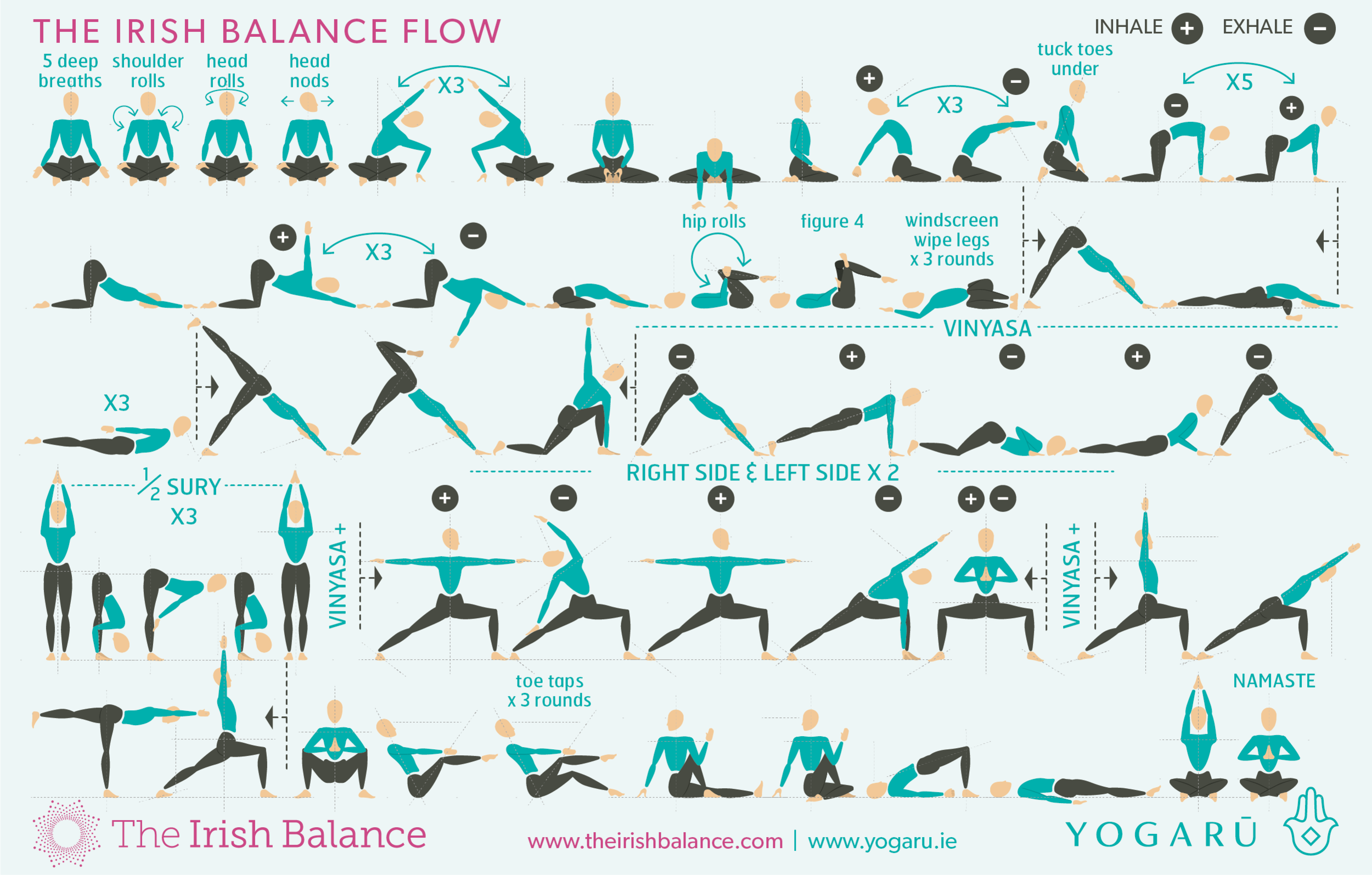When you embark on a yoga home practice it naturally evolves from guided online classes to learning how to go with the flow and moving instinctively in a way that feels nourishing to you each time you step on your mat. Guest writer Ciara Kelly is an Irish Medical Doctor working in the field of public health and creator of The Irish Balance where she shows us ways to live a happy, healthy, balanced life. Here she shares with us how her practice evolved over the last few years and has become an essential component of life balance for her.
CIARA’S YOGA JOURNEY
I am so excited to be bringing you guys my very own yoga flow – created by me and beautifully brought to life by my good friend Ruth Delahunty. Over the last 6 months, I have been slowly learning to trust myself on my yoga mat – flying solo if you will, without YouTube, which is how I started out! I have been using Ruth’s Asana cards and her website for quite a while now to flow at home. I asked her to help me bring to life a yoga flow I’ve been doing at home for the past few weeks. It’s a short little sequence that I’ve personally found really nourishing and comforting, whether that’s in the morning, before bed, or in the middle of a day off. I wanted to share it with you guys and hopefully inspire you to give yoga a try.
NAVIGATING THE SEQUENCE
This sequence is built to soothe and move you through this difficult period. Start by spending some time simply following your breath and notice the calming effect this has on your body and mind. Move slowly through the sequence and bring your full attention to what you are doing on your mat. The slower you allow yourself to move the more calming it will feel. Be led by how you feel energetically and emotionally when you step on your mat. If you are feeling tired and overwhelmed, concentrate on just the warm up poses and consider skipping the Vinyasas or one of the standing sequences. Spend plenty of time in childs pose between mini flows. If you are feeling a bit of cabin fever add more Vinyasas into the sequence and repeat one or two of the standing mini flows. Press strongly into your foundation and feel the strength of your whole body as you reach through the tip of your crown. Done with intention even Tadasana/Mountain Pose is an incredibly strong pose.
The arrowed lines in the sequence indicate a mini flow. Start with your right side first then repeat the poses between the arrows on the left side e.g right foot forward, then left foot forward. The ‘+’ and ‘-’ symbols will help you move with your breath, take long deep breaths to expand and nourish your lungs. For the linked poses with a ‘x3’ or ‘x5’, do 3 or 5 rounds of these two poses linking them with the breath. On row three there are five poses linked together with a dotted line, this is called a ‘Vinyasa’. These five poses are repeated before the two standing sequences on row four. You will find most of the poses at Yogaru for alignment cues of the poses you are unsure of.
To save the images for personal use click and hold down the image until the ‘save image’ option appears; on Mac hold down ‘control’ and click the image to get the option box; on PC right click on the image to get the option box. Scroll down in the ‘option box’ and click ‘save image’.
CIARA KELLY
Ciara is an Irish qualified medical doctor and creator of The Irish Balance. She is passionate about preventive medicine. Particularly how our lifestyles affect our health – the food we eat, physical activity, stress management and sleep. She show us how we can empower ourselves to live happy, healthy lifestyles full of balance.
You can find Ciara at The Irish Balance, her down to earth podcast that debunks many health myths and her popular Instagram for staying up to date in the health and wellness space.





